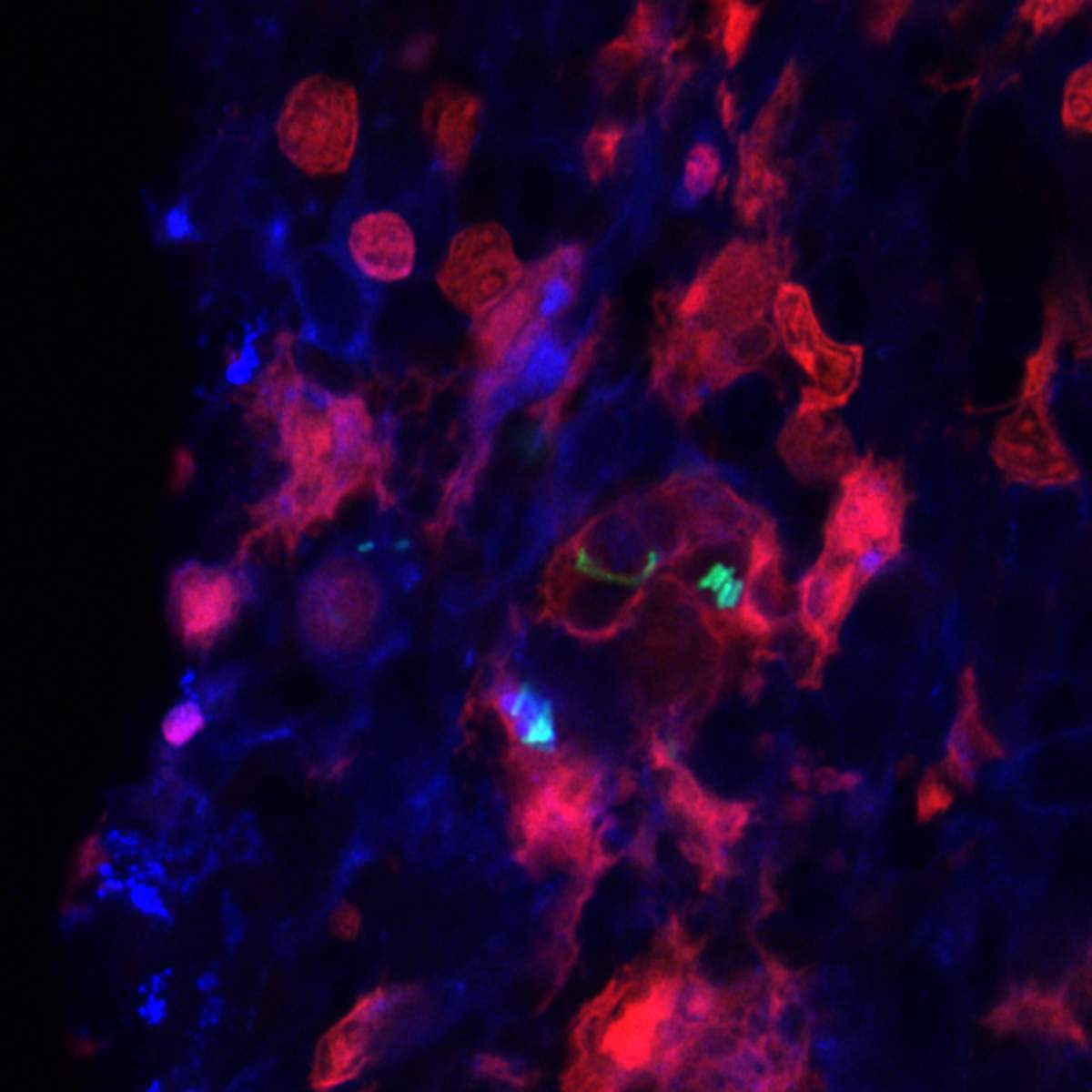The new findings may allow the development of new treatments for infections, such as tuberculosis, salmonella and Shigella, and for life-threatening reactions of the immune system
Encounters between disease-causing bacteria and the loyal soldiers of the immune system may end in a surprising result: turning the latter from deadly killing machines that protect the body into pampering habitats where the bacteria thrive undisturbed. Weizmann Institute of Science scientists recently found out A new subtype of immune system cells that reluctantly contributes to the formation of this deadly scenario. The new findings may allow the development of new treatments for infections, such as tuberculosis, salmonella and Shigella, and for life-threatening reactions of the immune system.
The laboratory of Dr Roy Avraham from the Department of Biological Control investigates intracellular bacteria - that is, those that are able to thrive inside the cells of our immune system. One of the best known in this family is the Salmonella bacterium, which in mild cases causes stomach upset in humans and in more severe cases can lead to a life-threatening reaction of the immune system called sepsis (sepsis). In the new study, conducted under the leadership of research student Dotan Hoffman, the scientists infected mice with a strain of salmonella that leads to the development of an acute disease and monitored the various stages of the infection, and in particular the reaction of the "first line" cells of the immune system known as macrophages; The function of these cells is to intercept any foreign agent - from bacteria to cancer cells, and they do this by swallowing the invaders whole (hence the origin of their name: great gluttons, in Greek), while they release toxic substances aimed at killing them.

One day after the infection, the researchers sampled the amount of salmonella bacteria in the spleen of the infected mice. The analysis of the data indicated a clear trend: in the first eight hours after the infection, the bacterial load gradually decreased, but then a surprising change occurred: the bacterial population began to grow, and later to actually thrive, resulting in the death of the mice within a few days.
Macrophages, found in almost every tissue, can exist in several different configurations, the differences between which are very subtle. Using an advanced genetic analysis method - RNA sequencing at the single cell level - Hoffman was able to differentiate between three different populations of macrophages in mice infected with Salmonella. One of them is a population of macrophages that has not yet been characterized. The discovery was particularly surprising, as this unknown population grew as the infection progressed, and when the researchers compared the amount of intracellular bacteria between each type of macrophage, they discovered that the newly identified macrophage serves as a habitat where the bacteria multiply and thrive. "We found the culprits in the surprising increase in the bacterial population," notes Hoffman. "Now we have to try to understand what their motives are."
The macrophages neutralize toxic compounds released by the immune system
Active cells of the immune system release compounds toxic to bacteria into their environment. However, beyond a certain level, these compounds may be toxic both to the cells themselves and to other cells in the environment, thus causing tissue damage. The researchers discovered that the new type of macrophages they discovered can neutralize these compounds, apparently to protect themselves, as well as perform damage control on the immune system. However, the chemical process of neutralizing the compounds makes a carbon source available to intracellular bacteria such as Salmonella. In other words, the macrophages identified in the study unwittingly become an all-you-can-eat buffet especially inviting for Salmonella. To test the hypothesis, the researchers infected transgenic mice that cannot produce this type of macrophages, and found that they were indeed more resistant to Salmonella.
"The population of macrophages that we discovered probably plays a control role that moderates the immune system's response, but the bacteria take advantage of this to enter the cells through the back door," explains Hoffman. These findings pave the way for a deeper understanding of the course of bacterial infection and break new research directions regarding the survival strategies of intracellular bacteria of different types and in different body tissues. Adds Dr. Avraham: "We have the first evidence that this subtype of macrophages also exists in the lungs and it is possible that it plays a role in the survival of the bacterium that causes tuberculosis."
Yara Tevet, Gili Rosenberg, Leah Weinman, Aryeh Solomon, Dr. Sheli Chen Avivi and Dr. Naa Busel Ben-Moshe from the Department of Biological Control and Sebastian Trezvansky from the Department of Immunology at the Weizmann Institute also participated in the study.
More of the topic in Hayadan:
- The surprising role of the "big gluttons" in preventing obesity
- Salmonella melons
- Salmonella bacteria against cancer
- Scientists at the Technion succeeded in damaging the defense mechanism of salmonella bacteria using substances originally developed against Alzheimer's disease
- Research: Salmonella becomes more virulent in space
